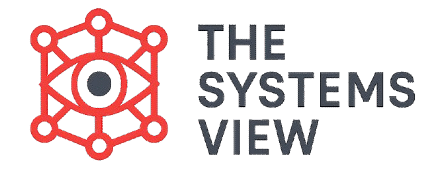If you want to compare the simple working of a clock to the complex structure of a human organization, you need a shared standard. The economist and systems thinker Kenneth Boulding provided this standard with his famous Systems Hierarchy.
Boulding realized that all systems are structured in similar ways, regardless of whether they are mechanical, biological, or social. He developed this nine-level framework to organize all known systems by their increasing complexity. This blueprint is essential to General Systems Theory (GST). It gives thinkers a universal map to compare systems across different fields of science.
The Systems Hierarchy: A Universal Map of Complexity
Boulding’s hierarchy is based on the idea of recursive complexity. This means that a system at any higher level contains all the principles and rules of the levels below it, plus at least one new feature that makes it more complex. For example, a living animal (a high-level system) contains all the mechanical (low-level) functions of a simple machine.
The hierarchy allows scientists to see the connections between their subjects. It proves that complexity is structured and logical, not random. The principles governing chemistry, for instance, are always part of the principles governing biology. By identifying these nine levels, Boulding helped achieve General Systems Theory’s goal of creating a common language for all of science.
Kenneth Boulding’s Systems Hierarchy is a core concept of General Systems Theory. It provides a non-subjective way to compare systems across all disciplines—from the movement of a planet to the decisions of a CEO—by ordering them based on the complexity of their structure and emergent properties.
The Nine Levels of Boulding’s Hierarchy
The nine levels are organized below, moving from the most predictable and static systems to the most complex and dynamic social systems.
Level 1: Frameworks (Static Structure)
This is the simplest level in the hierarchy. It involves the static, unchanging pattern or arrangement of things. There is no element of time or flow at this level.
Examples include the arrangement of atoms in a crystal, the physical boundaries of a mountain range, or the anatomical structure of a body when still. This level simply describes the geography and basic relationships between fixed components.
Level 2: Clockworks (Simple Dynamic System)
This level introduces motion, but it is motion that is fixed, necessary, and perfectly predictable. These systems are highly mechanical and deterministic.
Examples include the precise movements of the planets in the solar system or a basic clock. If you know the starting conditions, you can predict the future state of the system exactly. This level is the realm of classical mechanics.
Level 3: The Thermostat (Control Mechanism)
This is the first level that includes the principles of Cybernetics. It involves a basic control mechanism that uses feedback. The system can self-correct to maintain a set goal or equilibrium.
The system uses information (such as the current temperature) to control its output (switching the heater on or off). This simple feedback loop separates it from the mere Clockwork system, making it the first level that exhibits purpose-driven behavior.
Level 4: The Cell (Open System)
This level marks the beginning of life. It is the first true open system that sustains itself by constantly exchanging both matter and energy with its environment.
The system is self-maintaining through continuous processes like metabolism, ingestion, and excretion. This constant flow allows the system to achieve dynamic equilibrium—its components change, but its overall form remains the same.
Level 5: The Plant (Genetic-Societal System)
This level introduces the concept of growth, reproduction, and specialized parts with a clear division of labor. The system has clear, specialized subsystems like roots, stems, and leaves.
Crucially, this system introduces the difference between the genotype (the genetic blueprint or potential) and the phenotype (the observable, physical plant). The final form is not just a result of the environment but also of an internal, organizational code.
Level 6: The Animal (Zoo-System)
This system is characterized by a specialized nervous system, a brain, and specialized sense organs. The animal can actively process information from its environment.
This allows the animal to be capable of learning, goal-seeking, and adaptive behavior. The animal can use its senses to navigate its world and make decisions based on complex data processing.
Level 7: The Human (Man-System)
This level takes the complexity of the animal system and adds self-consciousness. The human not only processes information but is aware that it is processing information.
This level is defined by the use of language, symbols, and the ability to hold a mental image of the self and the world. The human can build sophisticated knowledge structures and reflect on their own values and experiences.
Level 8: Social Organizations (Socio-System)
This level deals with organized groups of humans. The complexity here is not in the individuals themselves, but in their inter-relationships.
The system is maintained through shared roles, communication networks, norms, and collective values. Examples include companies, governments, and global communities. This system demonstrates survival and adaptation through group behavior.
Level 9: Transcendental Systems
This is the final and most abstract level of the hierarchy. It is reserved for systems that include the ultimate and absolute aspects of existence.
This level deals with the unknown. It acknowledges the limits of current scientific knowledge and the philosophical or spiritual questions that lie outside the scope of the other eight levels.
Conclusion
Kenneth Boulding’s Systems Hierarchy is a monumental achievement in General Systems Theory. By mapping the world into nine levels, Boulding created a logical structure that unifies science. The hierarchy confirms that new and complex features, such as life, self-correction, and consciousness, emerge as systems build upon one another. This framework remains a powerful tool for researchers across all fields who seek to understand the structured complexity of the entire world.


